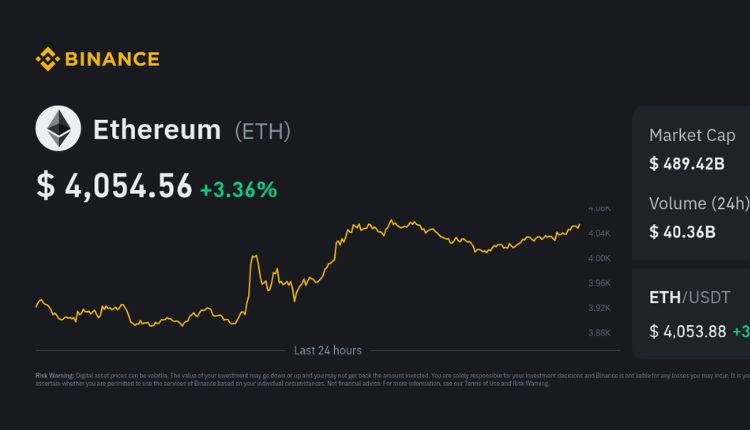Ethereum, one of the most significant cryptocurrencies after Bitcoin, plays a central role in the global digital economy. As a decentralized platform supporting smart contracts and decentralized applications (dApps), Ethereum is more than just a digital currency. Its native coin, Ether (ETH), is traded on global exchanges and widely watched for its price movements. The Ethereum price in USD is a key indicator for investors, traders, and tech enthusiasts who track the crypto market’s overall health and direction.
Current Ethereum Price Trends in USD
As of today, Ethereum is showing volatile yet active price movement. Over the past few weeks, the ETH/USD pair has fluctuated between key support and resistance levels, reflecting broader market dynamics, including interest rate changes, macroeconomic indicators, and overall sentiment in the crypto space. Ethereum is currently trading around a range that signifies investor caution, with bullish attempts being capped by profit-taking activities. Market participants are closely observing whether ETH will break above psychological resistance levels or consolidate for a longer period.
Factors Influencing Ethereum Price in USD
Several elements impact the current valuation of ethereum price usd. Market demand and supply are the most immediate factors, but broader economic indicators like inflation data, interest rate hikes by the Federal Reserve, and geopolitical events also influence investor sentiment. Additionally, Ethereum’s ecosystem developments such as network upgrades (e.g., Ethereum 2.0, Shanghai upgrade) and increasing adoption in DeFi and NFTs continue to play an essential role in determining its price.
Another significant factor is Bitcoin’s performance. Often, when Bitcoin gains or loses significantly, Ethereum follows a similar path. However, Ethereum has shown strength in decoupling its movements at times due to its unique use cases and developer community.
Ethereum’s Historical Price Performance Against USD
Historically, Ethereum has seen massive growth since its inception. From trading below $10 in its early years to reaching all-time highs above $4,800, ETH has provided exponential returns to early investors. The previous bull markets were driven by growing interest in blockchain, ICO booms, and later the explosion of DeFi and NFT platforms. Ethereum’s price in USD has always shown cyclical behavior, typically rallying with increased investor interest and technological advancements, followed by periods of correction and consolidation.
Ethereum Price Prediction and Future USD Valuation
While short-term predictions are speculative, analysts suggest a cautiously optimistic outlook for Ethereum’s price in USD. With ongoing institutional interest and the continued growth of Ethereum-based applications, ETH may test new highs in the next bullish cycle. However, regulatory uncertainties and technological bottlenecks could act as short-term barriers.
Some experts believe Ethereum could surpass the $5,000 mark in a favorable market environment, especially if Ethereum’s transition to a more scalable, efficient model (thanks to upgrades like sharding and rollups) delivers as expected. Yet, these are projections and should be viewed with careful risk consideration.
Ethereum’s Role in the Broader Crypto Ecosystem
Ethereum’s influence goes beyond its USD price. It remains the foundation of a vast number of decentralized platforms. Its programmable blockchain allows for endless innovation, which helps maintain its value proposition. While competitors such as Solana, Avalanche, and Cardano have emerged, Ethereum continues to lead in terms of developer activity and market adoption.
Moreover, the staking mechanism introduced in Ethereum 2.0 has changed how ETH is used and valued. With a portion of ETH locked in staking contracts, the circulating supply is reduced, which can have a deflationary effect on its USD value, especially in times of high demand.
Risks Associated with Ethereum Price Movements in USD
Despite its strengths, Ethereum faces several risks that can affect its USD valuation. Scalability issues, security concerns related to smart contracts, and rising competition from other layer-1 blockchains are considerable. Regulatory scrutiny from countries like the United States could also impact how Ethereum and its ecosystem are viewed by investors.
Additionally, broader economic instability or a crypto market downturn could lead to rapid declines in ETH price, which is why it is important for investors to practice diversification and risk management when dealing with cryptocurrencies.
Conclusion
Ethereum’s current price in USD reflects a complex interplay of market demand, technological advancements, and investor sentiment. As one of the most important digital assets globally, Ethereum continues to attract interest from various sectors, from finance to technology. Whether it is used for trading, staking, or building decentralized applications, Ethereum remains a cornerstone of the blockchain world.
The future of Ethereum’s price in USD will likely be determined by both internal developments and external market conditions. Staying informed and cautious is key for anyone looking to understand or invest in this dynamic asset.
